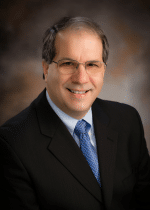ACA’s first Faculty Symposium takes place virtually on June 13, bringing together chiropractic college faculty members from around the country to learn and engage with their peers. The event – originally planned to take place at Keiser University in Florida – was transitioned to an online meeting to keep participants safe during the coronavirus outbreak. Organizers hope this will encourage more faculty to register and attend.
Below, ACA Blogs takes a moment to connect with Faculty ACA’s (FACA’s) president and vice president, Drs. Jennifer Illes and William Lauretti, respectively, to learn how the past few weeks have impacted chiropractic education, faculty members and students.
How has the transition to online teaching been going at your college?


The biggest challenge has been for laboratory classes. In my case, I teach chiropractic technique in a laboratory class, which is obviously difficult to do remotely. For those classes, students will have an “Incomplete” grade for this term. When we return to campus, we will catch up with the missed material so they can receive their final course grade.
I have also been able to use this situation as a teachable moment for students. I had a local practicing chiropractor call in as a guest speaker for my Patient Education class, and he shared some valuable business tips with students, such as the importance of controlling your overhead expenses in practice in case an unexpected event like this takes place.
How are the students handling it?
Dr. Illes: There was definitely a shift from week 1 online to week 3. For example, in week 1, I had a few emails from students that I believe were derived from emotions being on edge. I also spent a lot of time emailing students or calling to see how they were doing, which was very challenging. Some students have needed more attention through this transition and others just needed a little more emotional support.
In general, most students are doing OK, but for my technique classes most wish they were back at school—and many have said they miss school. We did do a survey of the students to assess how they were adapting to the new online format and more than 85% who participated said they were familiar enough with the Blackboard system to be successful, found it easy to interact and communicate with their instructors and were engaged by their instructor during the course.
Dr. Lauretti: For the most part, they seem to be adapting well. Some of them have had some personal challenges getting home and settled, but they seem to be handling things well.
In what other ways is the pandemic impacting chiropractic education and faculty members?
Dr. Illes: There are some faculty that do not use online platforms, own a laptop with a camera, and really do not enjoy “teaching online.” However, in these times there is no choice. The technology must be learned and employed in a timely fashion, and competencies must still be met. Organizing and starting discussion posts is much different for my class of 20 than it would be for another instructor teaching a class of 100. I would say that the majority of faculty that I encounter believe that things are moving along well, and we have established good coping mechanisms.
On the other hand, most clinical and technique faculty have mentioned the tremendous amount of time they have put into creating home technique videos, finding appropriate content, etc. For example, I teach six different classes, with more than 20 hours of contact time a week, and more than 50% of those hours are labs. Can you image describing a supine index costal push maneuver … to a large group of new students that just learned manipulations? It’s been challenging and a lot of work, but it does work out. I think knowing that we all have struggled a bit provides some comfort.
Dr. Lauretti: On a practical basis, I think it has made us all more aware of the importance of maintaining good hygiene in environments like technique practice labs and in our day-to-day lives. I think it’s also a good opportunity to reinforce the important role the chiropractic profession plays in the U.S. healthcare system by giving sound health advice to our patients and reducing the load on the rest of the healthcare system through our mastery of effective, conservative spine care.
What other issues will you and other faculty members be discussing at the upcoming Symposium?
Dr. Illes: We encourage faculty to get involved, be curious and ask questions, however due to our schedule it is best that lengthy discussions be put up on the MyACA FACA discussion board, ACA’s private online community for faculty members. There are more than 200 members that will be able to read and reply to any of the discussion posts. The plan will be to target the ideas, creative thinking and problem solving for a few of these common issues.
Dr. Lauretti: Chiropractic education faces some of the same struggles that other health education programs have: How do we engage students more often, retain their attention, and deliver a message that is learned versus memorization?
While I’m very disappointed we won’t get to meet in person in Florida, I’m still looking forward to the opportunity to connect at the Faculty Symposium with my colleagues from other schools and to participate in an exciting program. Some of the highlights include:
- Michael Wiles, DC, Ed, will present “For Clinical Teachers Only: What Every Clinical Teacher Needs and Ought to Know”
- Stephanie Halloran, DC, and Vivian Ly, DC, will speak on “Identifying and Addressing Patient-Initiated Sexual Harassment in a Chiropractic Setting”
- Jennifer D. Illes, DC, MS, will present “Consider the Learner: The Power of Microlearning in Chiropractic Curriculum”
- James J. Lehman, DC, MBA, will discuss “Neuromusculoskeletal Medicine Residency Training for Chiropractic Physicians”
- Marlene R. Wolf, MD, FAAFP, will tell us about “Using Hands-on Resources to Teach Nutrition in 2020”
- and I will talk about “Teaching Correct Medicare Billing: A Critical Skill for Chiropractors”
For descriptions of the Faculty ACA Symposium presentations, click here.
What is the purpose of FACA and how does is help faculty members?
Dr. Illes: FACA’s main purpose is to enhance chiropractic faculty members’ network. For most people, creating professional relationships is important, and joining a group enables you to have a sense of security and trust. From this, you can support and help one another in reaching your professional goals. I have taught at three different chiropractic schools, lectured at about 10 for post-graduate studies, and the relationships I have made and built at these other institutions has been instrumental in my growth and development as an educator.
Another benefit of enhancing your network is that you may find a mentor to help you with your professional needs, or you may be able to become a mentor to someone else. Giving back can be the greatest reward and benefit. Participating in forums, chat groups or discussion boards sponsored by the association is also a great way to grow your network. This allows you to use your peers as sounding boards and often make some great friends with the same interests as you.
Dr. Lauretti: FACA is a great opportunity for faculty teaching in chiropractic programs to connect with each other and keep up with the latest developments in chiropractic education. We have the opportunity to “rub elbows” and meet in person during the annual ACA Engage conference in Washington, D.C. We can also keep in touch virtually via the new MyFACA email forum and through our regular newsletters. I value the opportunity for faculty to give each other mutual support and to learn from each other so we can improve the experience our students have in our classes, and make them better practicing doctors of chiropractic.
